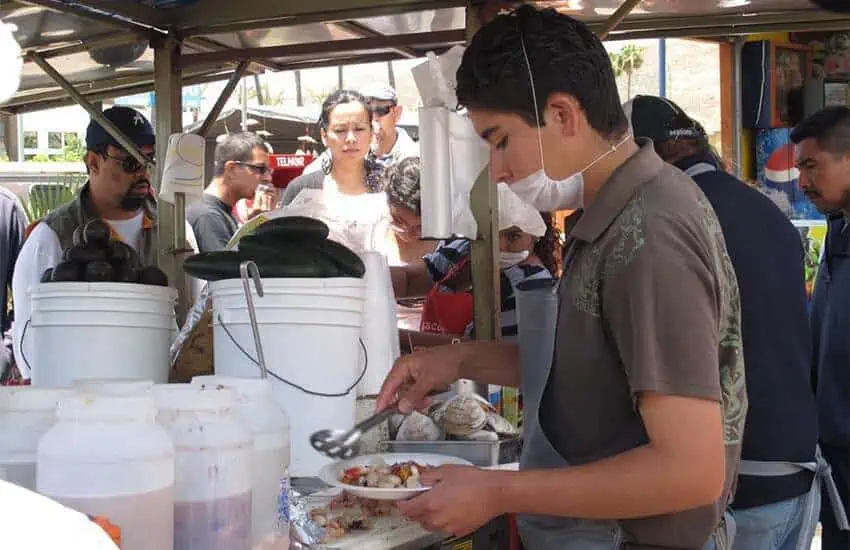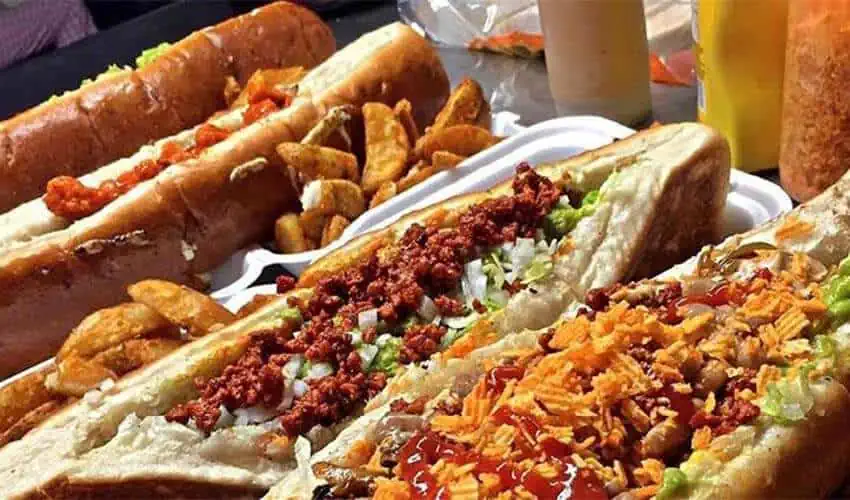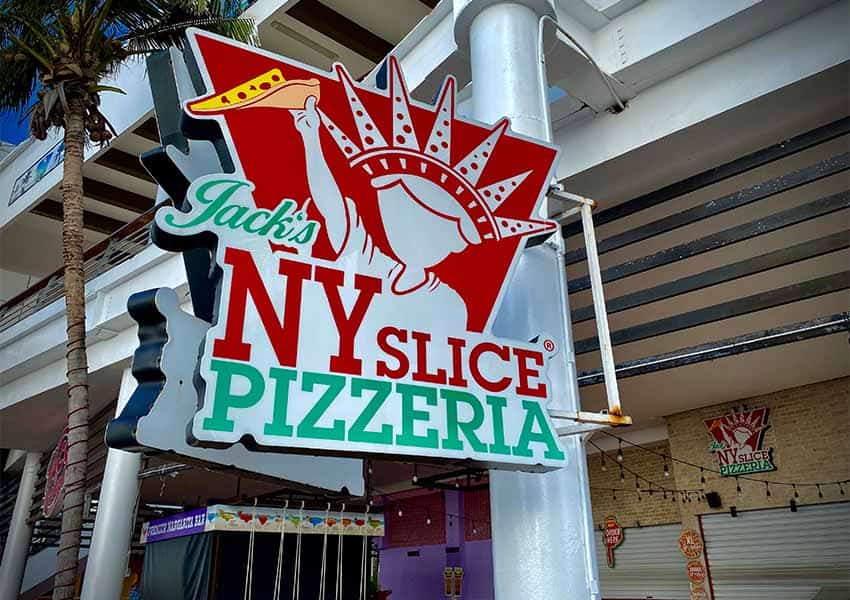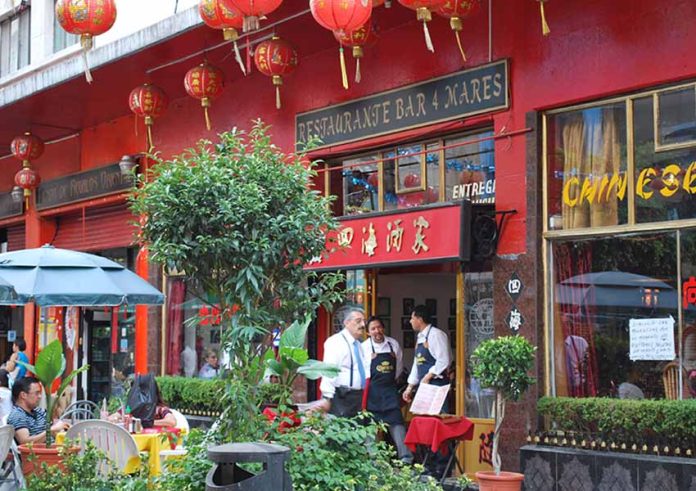Many of us English speakers come from countries where eating food from elsewhere is common enough to be pretty much normal.
We bring this habit with us to Mexico, but it can be difficult to indulge it.
It’s not that a variety of non-Mexican food cannot be had in Mexico; it certainly can, but it is nowhere near as ubiquitous as it is in countries such as Australia, the United States and England. And much of that is because of how Mexico sees itself internally and vis-a-vis the rest of the world.
Food and restaurants can play an important part in establishing the presence — and the acceptance of — arriving ethnicities. When there are a sufficient number of immigrants from a particular culture, their presence is generally first visible due to the appearance of their ethnic restaurants, then specialty stores and then even native food distribution channels.
People from London, New York, Sydney and more are no stranger to this phenomenon. But what about Mexico?

This country is not seen as a receiving but rather as a sending country when it comes to immigration. People have come to Mexico, in the modern sense, at least since the late 19th century, but the influx doesn’t approach that of the U.S. or Brazil. Even with the smaller numbers, the process of “foreign” food integration is very similar to that of other countries.
One of the largest immigrant groups over the past century or so in Mexico has been Chinese. Historical Chinatowns can be found in many areas here, from Tijuana as far south as Tapachula, Chiapas.
This long history means that most “Chinese” food found here has been adapted to Mexican tastes, with ingredients such as sliced jalapeños not uncommon.
The U.S. has also had a major impact on Mexican cuisine, the most obvious of which is the presence of fast-food chains. While they can be found in all of Mexico’s states, they are far more prevalent in the north, which is economically and culturally more connected with the United States.
Mexican supermarkets reflect the longstanding relationship with Chinese and U.S. cuisines. Many American cookies, breakfast cereals and condiments are readily found in them but with less variety the farther south you go. Supermarkets almost always have an Asian food section, and cheap, instant noodle soups have become a staple.
A few foods are so thoroughly integrated that they are no longer “foreign.” One is tacos al pastor (shepherds’ tacos), which are simply a Mexican adaptation of shawarma, introduced by Lebanese immigrants in the early 20th century.
Gone are the lamb and Middle Eastern spices, substituted with pork and achiote and other mild flavorings. Today, it is Mexico’s most popular taco.
None of this translates into a widespread acceptance of foreign foods by Mexico’s populace, not even with U.S. food. Ask a Mexican what meatloaf or a casserole is and you will probably draw a blank.
You might think that Mexico City would be the country’s epicenter of multiculturalism. It is and it isn’t.
Most immigrants to Mexico have come to the capital, and non-Spanish last names are not that uncommon. The current mayor’s last name is Sheinbaum. You can find restaurants and specialty stores in Mexico City related to many of the world’s cuisines.
But these restaurants and stores are limited to only certain areas of the city. This is because such exotic tastes appeal mostly to the city’s upper classes, and even they are often selective in what they eat.
Cuisines from rich countries are far more popular than those from even other parts of Latin America. Eating foreign food has more to do with imitating “prestigious” cultures rather than demonstrating knowledge of the world in general.

In upscale dining, Europe still holds a strong advantage, while U.S. food is mostly considered to be hamburgers, hot dogs and pizza. Travel preferences of the rich and media images have much to do with this.
Japanese food has surged in popularity, especially sushi, which is quickly becoming Mexicanized with ingredients such as avocado, mango, and fish and mayonnaise fillings, along with chile-infused soy sauce. This acculturalization is mostly due to the popularity of Japanese cartoons. There is little Japanese immigration to Mexico today, nor much travel by Mexicans to Japan.
But in most parts of Mexico City, ethnic restaurants are almost entirely absent. The closest you get is places that sell hot dogs, hamburgers and pizza, but these have been thoroughly assimilated, often with ingredients that could make an American or Italian cringe.
The presence of foreign food restaurants is most noticeable in areas with high tourism and large foreign populations. They include places like San Miguel de Allende, Guanajuato; Ajijic and Puerto Vallarta in Jalisco; and Mérida, Yucatán. It’s true even in smaller destinations.
There are some surprisingly good Italian places on the Oaxaca coast and in San Cristóbal de las Casas, Chiapas. Owners of Eastern European Casa de Pierogi in Puerto Escondido, Slawomir and Barbara Grunberg, specifically credit the international community and tourists for allowing their Polish food restaurant to get on its feet.
Tijuana’s location as the world’s most traveled border crossing brings not only constant influence from the north but also many non-Mexican migrants who find their way here either temporarily or permanently.

Mexico does not see itself as globalized or multicultural in the sense of a mixture of peoples from different parts of the world. It sees itself as “La Raza,” a combination of indigenous and Spanish forged in the colonial period and heavily promoted since the early 20th century.
I should end by emphatically saying that this is a very broad generalization. Of course, there are Mexicans who have similar desires to know more about the world’s cultures and show off the knowledge they have. When I was a teacher at universities in Toluca and Mexico City, I was impressed at how many students knew and preferred to eat their sushi and Chinese food with chopsticks.
Leigh Thelmadatter arrived in Mexico 18 years ago and fell in love with the land and the culture in particular its handcrafts and art. She is the author of Mexican Cartonería: Paper, Paste and Fiesta (Schiffer 2019). Her culture column appears regularly on Mexico News Daily.
